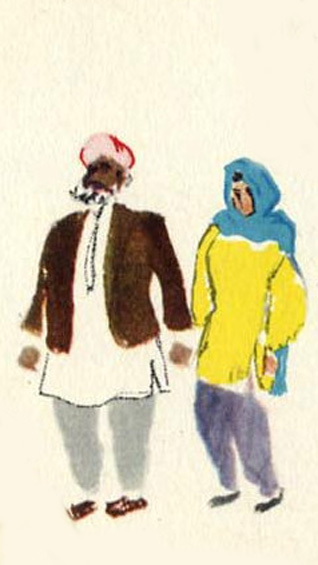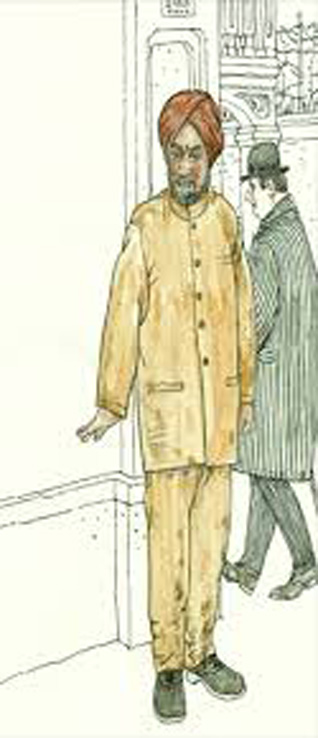History
The History of Shanghai’s Sikhs Remains Fragmentary
MEENA VATHYAM
On Dongbaoxing Road, a time-weary red-brick edifice is one of the surviving symbols of Shanghai’s past -- a gurdwara, once a vibrant religious and community center for one of the least-documented groups in China: the Sikhs from Punjab.
The Sikhs, a community of saint-warriors and then British subjects, were recruited from Punjab as a part of Shanghai Municipal Police (SMP) to patrol the traffic in the International Settlement under the aegis of the Shanghai Municipal Council, its governing body. In 1884, Sikhs were hired locally for SMP but direct recruitment from Punjab commenced from 1885.
The tall Sikh with his bright scarlet turban was an imposing figure and sojourners to old Shanghai persistently remained in awe after having witnessed a Sikh policeman on duty at traffic intersections and public parks.
An allusion to old Shanghai would forever remain incomplete without the mention of the ubiquitous Sikh policeman with the “voluminous and picturesque red turbans.” He carried a black-and-white truncheon used to intimidate the Chinese, especially the rickshaw pullers who would face the Sikh’s brute force on a daily basis. This much-despised image was repeatedly depicted in newspaper cartoons and caricatures by the Chinese and Westerners alike.
The Sikh policemen were the most dominant face of the small sub continental community that established its footprints in old Shanghai. Parsis, Bohra Muslims, Sikhs, Sindhis and one notorious Princess Sumaire all co-existed in old Shanghai, but meagre information on them is recorded.
The Sikh community was the largest among them all and the Sikh policemen -- and later watchmen -- could be found living along with Chinese and other foreigners in the city.
The Sikh policeman was labeled as “Hong Tou A-san” by the Chinese, a slur with reference to their red turban. Yet, despite the broadly reported and encouraged (by the British) uneasy relations, the Shanghai Sikh community, which had established their own network, gurdwaras, schools, hockey association, interacted with the Chinese on friendlier terms and a few Sikhs even married Chinese women, something that was most frowned upon within both communities.
In August 1909, Bhai Nidhan Singh married a Chinese woman in the former Dongbaoxing Road gurdwara, who converted to Sikhism and took Amrit as Gursharan Kaur. While cases of Punjabi-Chinese marriages were few nevertheless they occurred in spite of the strict social norms, a fact actively backed by the British. The purpose of recruiting Sikh policemen was to perpetuate the Divide-and-Rule policy by the British which had proven to be vastly successful in their other colonies.
The Dongbaoxing Road gurdwara was opened in 1908 by the Sikh community with funds raised by them on a piece of land allotted by the Shanghai Municipal Council. Here, Vaisakhi and other important high holidays were celebrated.
The gurdwara also became a hub in promoting the freedom movement in Punjab and the Indian subcontinent (Ghadr, 1913-17) which had spread among Sikhs worldwide. Revolt against the British was promoted through fiery speeches and seditious literature, a fact that did not escape the British.
Ghadr movement, however, was crushed in 1917 and “treacherous” Sikhs were deported and hanged to deter any notions of freedom. Consequently, another gurdwara meant only for the Shanghai Sikh policemen was inaugurated on Gordon Road (today’s Jiangning Road) in 1916 with the intention to quell any thoughts of rebellion and exert total control over the British Sikh policemen.
By 1920, Shanghai Municipal Police force had employed 513 policemen in the Sikh branch. The Sikhs were paid a low-level salary in comparison with Westerners in the Shanghai Municipal Police but still a higher wage than the Chinese policemen in the same force, another factor that fuelled hostility between the Sikh ‘interloper’ and the native Chinese.
The hostility came out in the full open on May 30, 1925 when Shanghai Municipal Police shot at protesting Chinese (anti-imperialism and foreign labor) demonstrators on Nanking Road under the orders of Inspector Everson. Both the Chinese and Sikh policemen had fired the shots but the Sikh policemen were depicted as being entirely responsible for it.
With World War II, the Japanese whose dominance in Shanghai had become crystal clear, the Sikhs got an opportunity to hit back at the British. Though, again the loyalties remained divided. Some old-timers remained faithful to the British while others, especially the younger Sikhs, became a part of the Indian National Army movement under the leadership of Netaji Subhas Chandra Bose and General Mohan Singh.
There was also the younger breed of Sikhs who were born and raised in old Shanghai. Thomas Hanbury School for Boys had opened a special class in 1922 in a separate building for the 12 children of the Shanghai Sikhs but again the idea of education implied empowering the Sikhs and raised national consciousness being the inherent danger, the class was quickly closed.
Religious and informal education, however, continued in the official gurdwaras and few unofficial ones as well. The younger generation remained aimless and at cross-purposes with the older generation and found itself wholeheartedly allying with the Indian National Army (“INA”) and its goals.
By the late 1930s and early 1940s, as the threat of Japanese over the International Settlement increased, the exodus of Sikhs with their families occurred and most returned to Punjab. By 1945, the Shanghai Municipal Police was disbanded and the remaining men were repatriated to Punjab.
Yet, there were some who remained in Shanghai even after the 1950s. The last Sikhs left Shanghai in 1973.
Today, the former Dongbaoxing Road gurdwara is a residence for a few Chinese families and recognized by the Shanghai government as an immovable relic. The Sikh policeman though has found his place in Shanghai’s history through wax sculptures in several Shanghai museums visually narrating the various key players that framed its unique history.
A history that still remains very much fragmentary.
[Courtesy: Shanghai Daily. Edited for sikhchic.com]
November 18, 2016
Conversation about this article
1: Harinder Singh (Punjab), November 18, 2016, 7:27 AM.
Our ancestors were trail-blazers. We now need to see our nation builders doing good in every nook and corner of the world.
2: Tinku (Punjab), November 20, 2016, 8:25 AM.
We have not learnt from history and continue to fight other people's wars -- as we are doing in India today.




